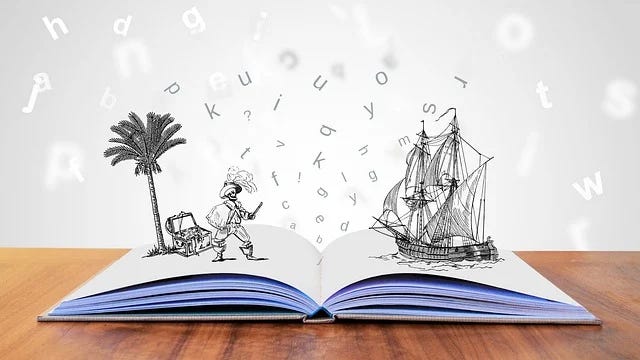The Power of Storytelling in Child Education
A Journey of Imagination, Connection, and Learning
Storytelling is as old as humanity itself. Long before the advent of the written word, oral traditions were the primary means through which cultures passed down knowledge, values, and traditions from one generation to the next. In today's fast-paced, technology-driven world, storytelling remains a powerful tool, particularly in the realm of education. For children, stories are not just a source of entertainment; they are a gateway to understanding the world, developing empathy, and fostering creativity. This blog post will explore the profound impact of storytelling on child education and why it should be an integral part of every educational approach.
The Psychological and Cognitive Benefits of Storytelling
At the heart of storytelling is the ability to engage the imagination. When children listen to stories, they are transported to different worlds, where they encounter characters, situations, and emotions that may be very different from their own experiences. This engagement of the imagination is crucial for cognitive development. It encourages children to think creatively, to visualize, and to predict outcomes, all of which are important skills in problem-solving and critical thinking.
Moreover, storytelling enhances language development. As children listen to stories, they are exposed to new vocabulary, complex sentence structures, and different linguistic styles. This exposure helps them develop their own language skills, both in terms of understanding and expression. Listening to stories also improves listening skills, attention span, and memory, as children must follow the narrative, remember details, and often anticipate what might happen next.
From a psychological perspective, storytelling has the power to shape a child's understanding of the world and their place in it. Stories can introduce children to different cultures, perspectives, and moral dilemmas, helping them to develop empathy and a sense of justice. Through the experiences of characters in stories, children learn to identify and manage their own emotions, as well as understand the emotions of others. This emotional intelligence is critical for their social development and well-being.
Cultural and Moral Education Through Storytelling
Storytelling is also a vital tool for cultural and moral education. Stories have always been a means of preserving and transmitting cultural heritage. Through stories, children learn about the customs, beliefs, and values of their own culture, as well as those of others. This cultural knowledge fosters a sense of identity and belonging, while also promoting an understanding and appreciation of diversity.
Moral lessons are often embedded in stories, teaching children about right and wrong, justice and fairness, and the consequences of actions. These lessons are conveyed in a way that is accessible and engaging for children, making them more likely to internalize these values. For example, classic fables like "The Tortoise and the Hare" teach the value of perseverance and humility, while modern stories like "The Giving Tree" highlight the importance of selflessness and kindness.
Storytelling as a Tool for Building Relationships
One of the most powerful aspects of storytelling is its ability to build and strengthen relationships. When a parent, teacher, or caregiver tells a story, they are not just conveying information; they are also sharing a part of themselves. The act of telling a story is an intimate one, requiring the storyteller to engage with the listener on a deep emotional level. This shared experience creates a bond between the storyteller and the listener, fostering a sense of trust and connection.
In the classroom, storytelling can create a sense of community among students. When children share stories with each other, they reveal parts of themselves, their experiences, and their imaginations. This sharing can lead to greater understanding, empathy, and respect among peers. It also encourages collaborative learning, as children discuss and reflect on the stories they hear, often leading to new insights and ideas.
Integrating Storytelling into Education
Given the many benefits of storytelling, it is essential that educators and parents make storytelling a regular part of a child's educational experience. This can be done in a variety of ways. For younger children, reading aloud is a powerful way to introduce them to stories. This can be done at home, in the classroom, or even in community settings like libraries. Choosing stories that are age-appropriate and relevant to the child's experiences will make the stories more engaging and meaningful.
For older children, storytelling can be integrated into various subjects. For example, in history classes, teachers can use stories to bring historical events and figures to life, making them more relatable and memorable. In science, storytelling can be used to explain complex concepts in a way that is accessible and engaging. Encouraging children to create and share their own stories can also be a powerful educational tool, as it allows them to express their understanding and creativity.
Digital storytelling is another exciting avenue to explore. With the rise of technology, children can now create and share stories in digital formats, using tools like video, animation, and interactive media. This not only engages them in storytelling but also helps them develop important digital literacy skills.
Conclusion: The Lasting Impact of Storytelling
In conclusion, storytelling is a powerful and versatile tool in child education. It engages the imagination, enhances language and cognitive development, fosters empathy and emotional intelligence, and serves as a means of cultural and moral education. Most importantly, it builds relationships and creates a sense of community. In a world that is increasingly focused on technology and data, storytelling reminds us of the importance of human connection and the power of the imagination. By making storytelling an integral part of education, we can help children develop the skills, knowledge, and values they need to navigate the world with confidence, compassion, and creativity.




